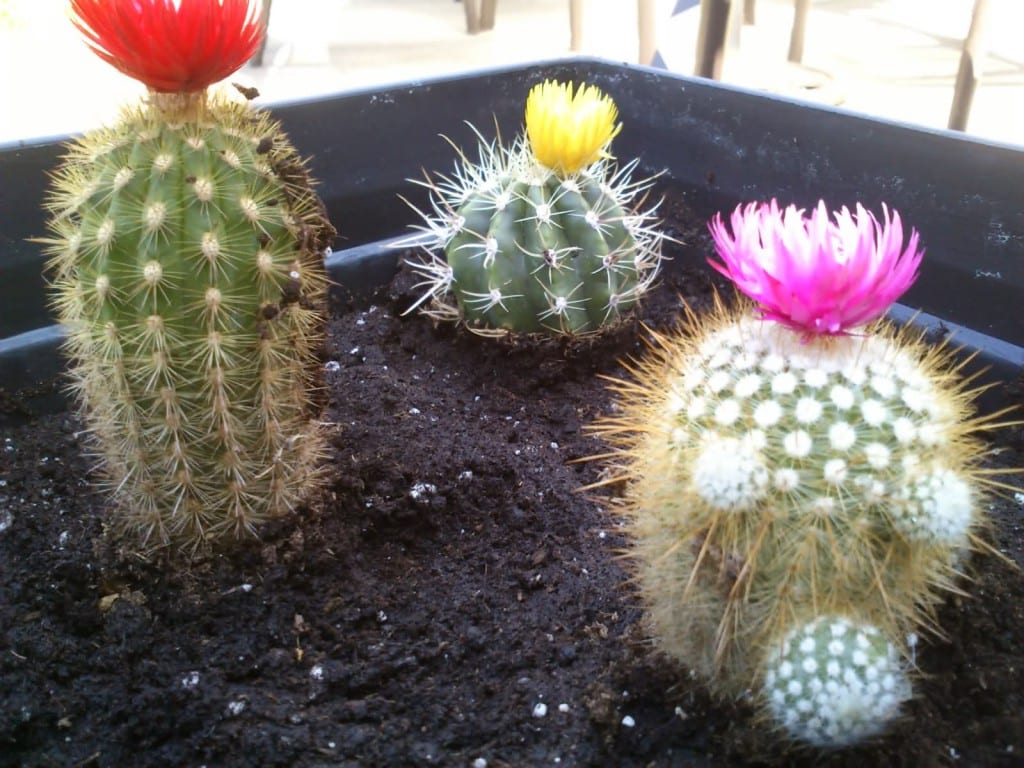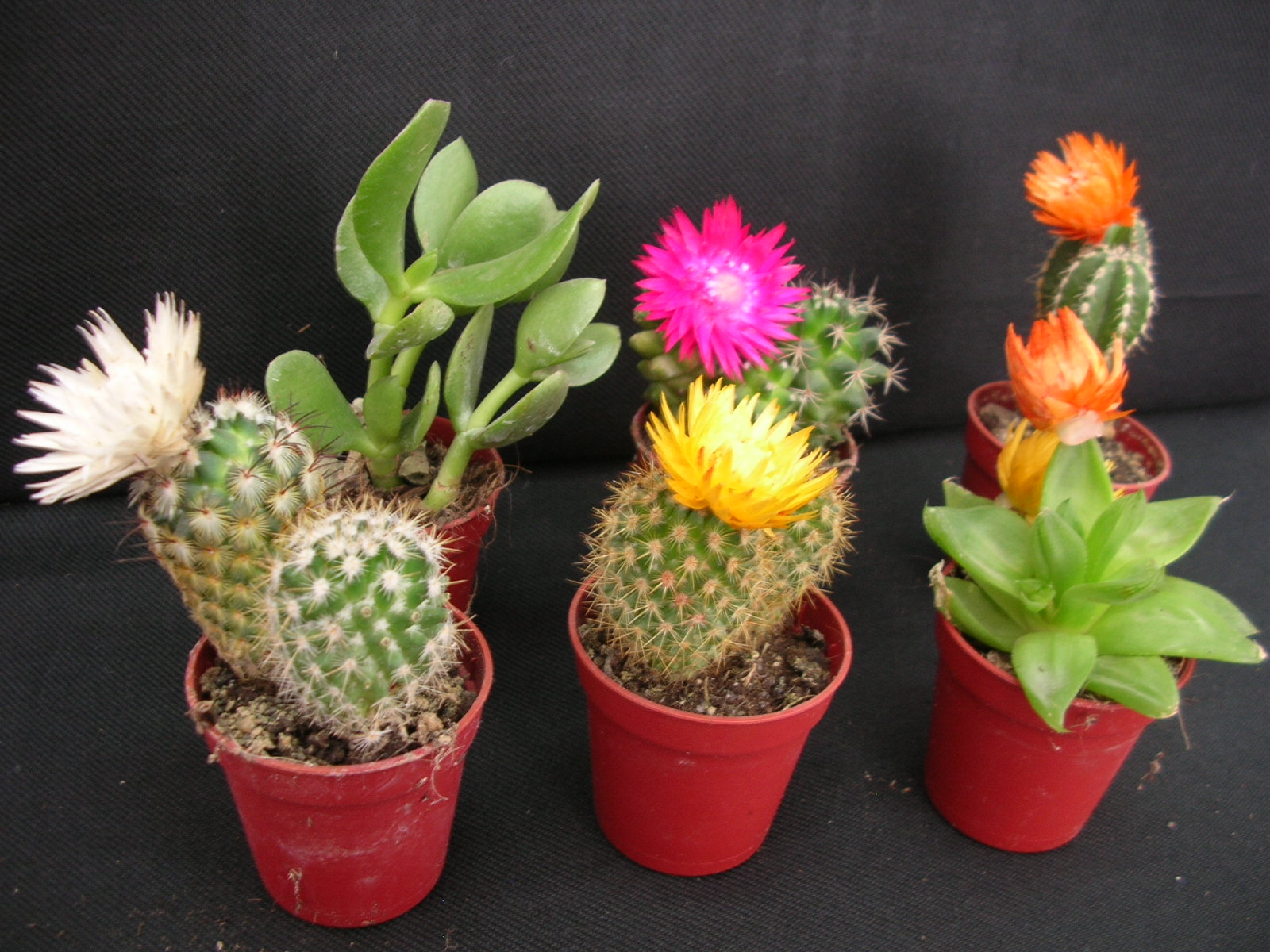Plants are in the daily life of society, being used to decorate environments and condition homes. Cacti represent one of the main ornamental plants used by society, this is due to their elongated or rounded and thorny shape, but their flowers are the most symbolic because they are solitary species, with large petals and striking colors, known in the next article the different species of the most popular Cactus with Flowers.

Cacti with Flowers
Plants are plant species that cover the entire planet earth, are born on the earth's surface and are distributed in every corner of the globe, adapting to various climatic conditions (drought, rain) and arise in all ecosystems present in deserts, jungles, forests, savannahs and plains, among others. They represent one of the most important organisms, for carrying out the ideal biochemical process for the maintenance of life known as photosynthesis, responsible for providing the necessary oxygen for all living beings.
There is a great biodiversity of plant species, in this case cacti will stand out, it is a type of plant that belongs to the Cactaceae family and are very popular for being found mainly in arid and desert regions, being considered as a type of species that has evolved and adapted to dry climates and low humidity, taking various physical forms such as rounded and cylindrical in order to limit its exposed surface and conserving humidity inside its interior.
In addition, its leaves evolved to take the form of pointed needles, with the purpose of avoiding the loss of moisture from its system and representing a means of protection against other predatory species. They are considered to originate from the American continent although it is believed that in periods of colonization some species from the old world were transported, for example those that belong to succulent plants very similar to cacti. Despite this, there are endemic species located on the African continent.
Features
The cacti family is also known for being part of the succulents that store water in their tissues in order to adapt to the habitat in which they develop. They have a rounded stem with a barrel size (Globoso) or a cylindrical flattened in some areas (Columnar), it is thickened by a strong green tissue, this is due to the chlorophyll that allows the development of photosynthesis.
They have in their structure an areola that is found in the upper zone of the cacti vegetative species, it is considered as the growth zone and they produce their flowers, developing multiple hairs similar to cotton fibers, in addition to being covered around them with thorns. . Its flowers are usually solitary and hermaphroditic (they have both reproductive organs) emerging in certain seasons of the year and representing one of its main attractions.
This species is seen in deserts and even used as an ornamental in homes and other interior areas, this is due to its aesthetics and striking flowers.
Basic care
The cultivation of cacti is considered very simple and easy to care for, although there are a great variety of them, each one has elements in common. Due to their nature these plants need little attention to stay healthy and strong, it is recommended to recreate the normal conditions of their ecosystem. The basic conditions for its effective cultivation are described below:
Irrigation
Being irrigation considered as the way to add water to plant species, it is responsible for being distributed in its roots and moving inside the entire plant. It is considered an essential element for the healthy development of cacti, characterized by storing them within their tissues and this is due to being adapted to extreme weather conditions (high temperatures and low humidity).
Cacti are plants that can resist irrigation well, but the accumulation of liquid must be avoided by flooding the soil. Due to this, it is necessary to be watered from time to time, it is recommended once a week in the summer season and once a month in the winter season since the environmental humidity guarantees to cover the water need at this time. In case of being in a pot, it is necessary to avoid the accumulation of water in the lower plate, since in time it affects the roots and rots.
It is necessary to take into account the environmental condition to know how often the irrigation is carried out, in case the cactus is indoors (house or office) with heating turned on regularly, it may need greater abundance of irrigation regardless of the time of the year. Otherwise, it can be watered on a few occasions, since they are plants that require a small amount of water.
Location
The plants are always located in a specific area, planted in areas that favor their growth and allow adequate contact with sunlight. Cacti need a lot of light and preferably direct light. For this reason, they are usually located in well-lit areas (external areas, gardens, near windows). The species that present hairs and thorns (high number of them), need a great amount of sun; Otherwise, those with few thorns require more ventilation and shade.
Rusticity
It consists of a term related to the ability of plants to survive adverse conditions during their growth, being able to tolerate cold, heat, drought and wind. In the case of cacti, during winter times they must be protected since they do not tolerate cold (temperatures below 7ºC), it is recommended that they be in very warm rooms with temperatures above 20ºC and avoid the coexistence of cold and soil moisture in the surrounding environment.
Soil Type
The soil, also known as substrate, refers to the surface where the plant is planted, they are responsible for providing nutrients for its development and offering stability during its growth. Cacti are capable of withstanding arid soils (desert) distributed throughout these lands, but if they are planted in more nourished soils they can have more vigorous growth and more striking flowering.
It is recommended to use soils with sufficient porosity, moderate richness, abundance of nutrients, good moisture retention and with a slightly acidic pH (approximately 6).
Fertilizers for Cacti
They are organic or inorganic substances that are responsible for nourishing the soil, providing the minerals that are assimilable in the roots of the plants and preserving the appropriate conditions during their growth. Although the cactus can adapt to soils poor in nutrients, it is advisable to use prepared land that offers the necessary properties and provides the necessary nutrients for its proper development.
Transplant
Sometimes special conditions must be applied for the good development of the plant, such as transplantation, which refers to moving the plant to another area that improves its development and growth. In case the cactus stops growing, acquires a bad color and its roots protrude; it is because it needs to be transplanted, in case of being a pot, use clay ones or bowls, apply drainage at the bottom.
Types of Cactus with Flowers
Flowering cacti represent a great attraction, this is because they are very striking and colorful, with a fairly large size compared to those obtained from other plants. Its flowers usually appear individually or solitary, with a fairly short life cycle; There are many types of cacti and depending on their species, it will influence the resistance of the flower, in some cases they only survive during the day.
In all cases, they have a flowering time during spring or summer, mainly in those times when there is abundant light and high temperatures, in addition to favoring the presence of bees that pollinate their nectar. There are different types of cacti with flowers, highlighting some of them below:
Star Cactus or Astrophytum
The Astrophytum Ornatum also known as the star-shaped cactus, in addition to being commonly called Liendrilla, Biznaga, Astrophyto or Piojosa. It has a cylindrical body with advanced age reaching a meter in height, dark green (youth) and then light green with silver spots (old age). In addition to having flowers in several groups of two more units, they measure up to 9 centimeters in diameter, their color is yellow and they bloom from mid-spring to late summer. They are native to North America and grow on any type of soil.
echinopsis
It consists of a type of cactus that belongs to the Cactoideae subfamily and is native to South America with more than 150 different species. Its stems have a cylindrical and elongated shape culminating in a rounded shape; therefore they range from very large species to small shrubs. This type of cactus is grouped into three groups and growing simultaneously, they consist of those species that reach great heights. Its flowers are distributed on the stem and stand out for their large size, they are considered the most beautiful flowers in the world and this is due to their trumpet shape, striking petals (white, yellow, pinkish or orange tones).
coryphantha
The word Coryphantha comes from the Greek referring to flower at the top of the plant, it consists of a type of small or medium-sized cactus, with a spherical body and in some cases cylindrical in shape with pronounced and elongated spines. They are native to Mexico and the southern United States; They present a pink or purple flower that combines its colors with white and yellow petals inside. It has more than 40 diverse species, with 2 subgenera and 9 subspecies.
Rebutia
It is one of the main species that are used for gardening and ornamentally and this is due to its small size in the shape of a globe and colorful flowers. The latter are usually very large compared to their body, blooming in the spring seasons and reaching medium or high temperatures, but it only happens when they are at a young age, appearing in the form of groups with monochromatic shades of orange and red.
Aporocactus
It is a species native to Central America and widely seen in Mexico, being widespread in all areas with a temperate climate. Presenting various names such as the rat tail cactus, whip flower, hanging cactus or horn flower; They have a body that is covered by spines and can adopt two main forms, the main one being cylindrical and elongated, also creeping (hence their common names). It has small flowers with abundant, fleshy and elongated petals that grow in different areas of its body, they have shades between pink and fuchsia, there are other species that have yellow and white colors.
We hope this article has been helpful, we leave you others that will surely interest you:


